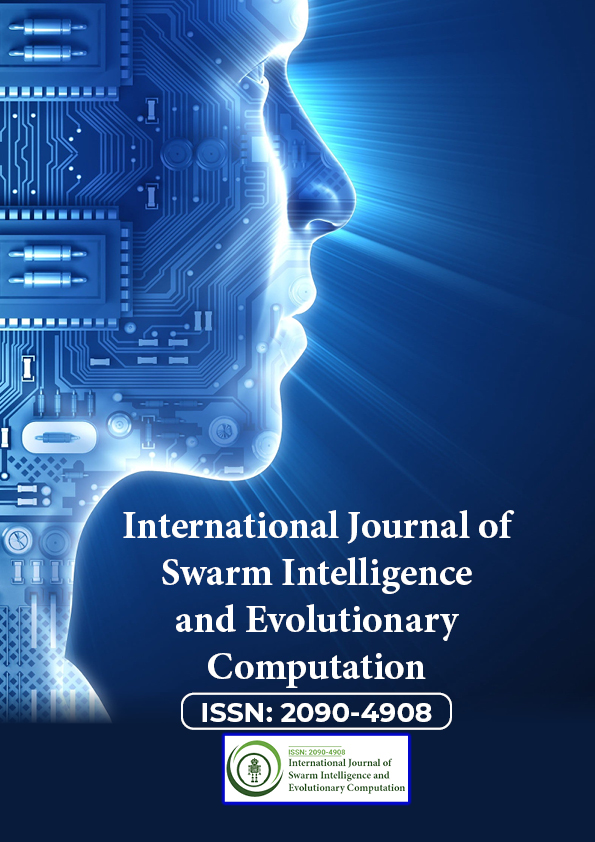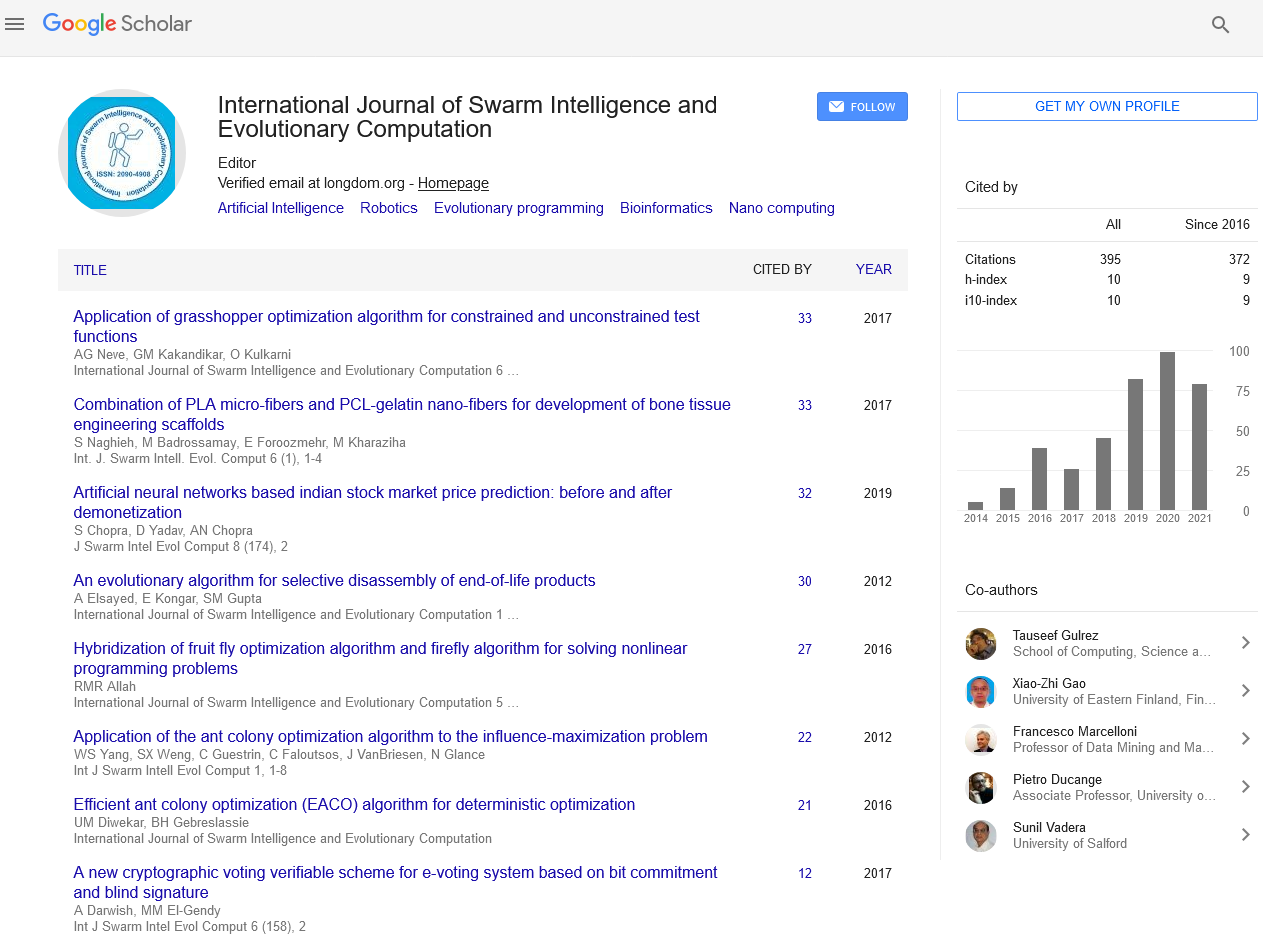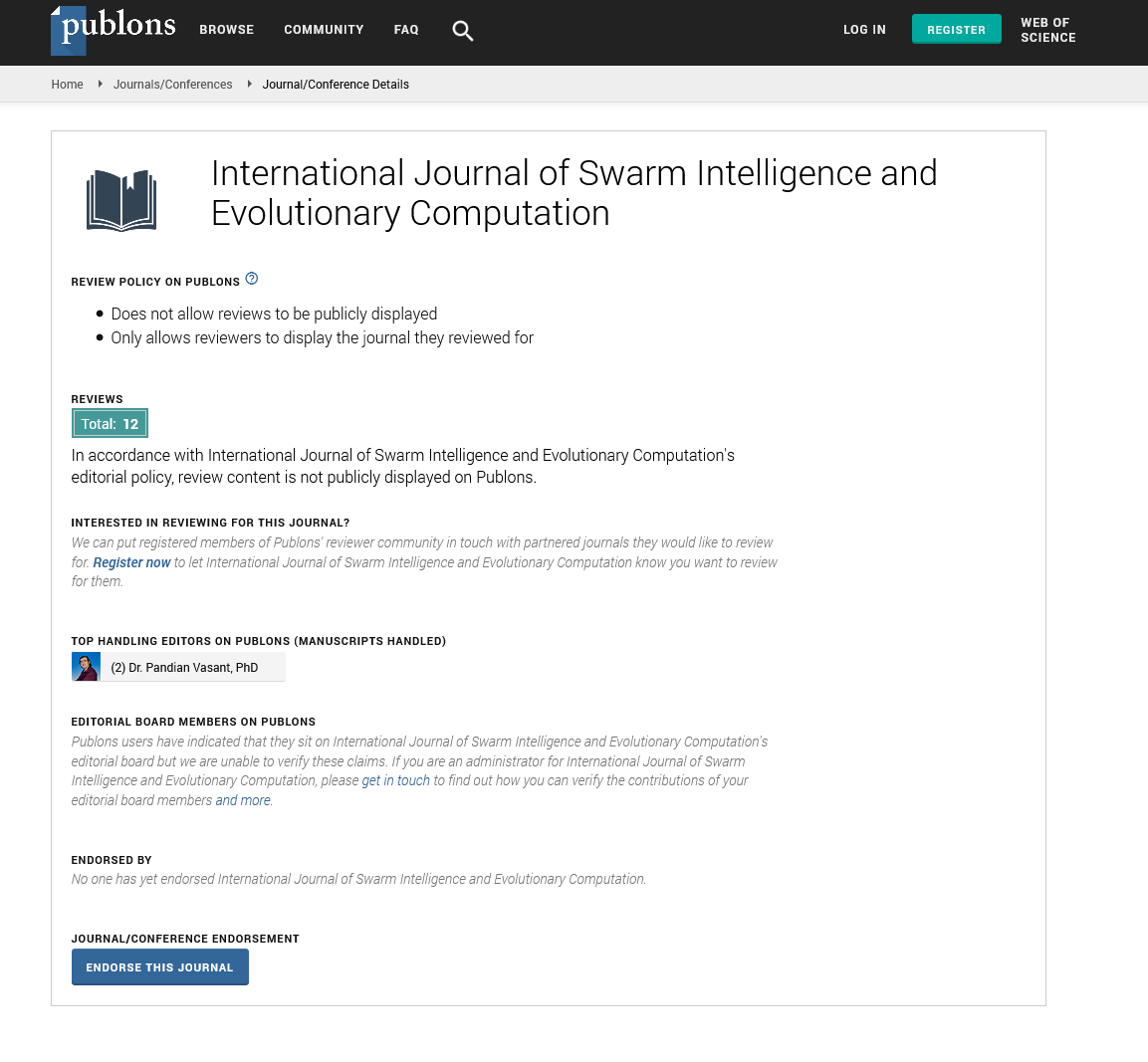Indexed In
- Genamics JournalSeek
- RefSeek
- Hamdard University
- EBSCO A-Z
- OCLC- WorldCat
- Publons
- Euro Pub
- Google Scholar
Useful Links
Share This Page
Journal Flyer

Open Access Journals
- Agri and Aquaculture
- Biochemistry
- Bioinformatics & Systems Biology
- Business & Management
- Chemistry
- Clinical Sciences
- Engineering
- Food & Nutrition
- General Science
- Genetics & Molecular Biology
- Immunology & Microbiology
- Medical Sciences
- Neuroscience & Psychology
- Nursing & Health Care
- Pharmaceutical Sciences
Perspective - (2021) Volume 10, Issue 6
Artificial Intelligence and Brain
Alihan Erkal*Received: 04-Jun-2021 Published: 25-Jun-2021, DOI: 10.35248/2090-4908.21.10.e223
Description
AI generally is subsumed by approaches including neural networks, machine learning, deep learning, etc. There can be more than 100 layers in these learning algorithms. The layering organization is often input, hidden, and output architectures. There are many computer programs and architectures that exemplify uses of AI. Some computer programs are capable of learning to play computer games, which is an important development for AI and potentially, in time, working towards awareness. For example, work is being done to unify a theory of cognition involving sub-symbolic computation. The essential ingredient is that this instrument attains knowledge of interactions with its ecosystem to design and regulate sub- environments within that ecology. This is accomplished in a self- driven manner that is adaptable, goalguided, and self-motivated. It should be noted that this is a step forward, different from other preceding cognitive and symbolic architectures.
Brain Disease and Mirror Neurons
In support of the physiological importance of mirror neurons, is their possible involvement in human brain diseases, for example, in amyotrophic lateral sclerosis (ALS). ALS and fronto-temporal dementia might be associated with particular mirror neuron dysfunction. In ALS, possibly, empathy, language, gesture, and imagery may be affected by mirror neuron error.
Mirror neurons appear to be involved in additional brain diseases and a few examples follow. Alzheimer's disease is hypothesized to have a link with motor function and this hypothesis is termed the Embodied Cognition Hypothesis. This hypothesis proposes that perception representations are coupled with actions. Mirror neurons may weigh heavily in this regard. Recently, mirror neuron integrity was studied in several categories of aging people: Alzheimer disease, Mild Cognitive impairment with hippocampal atrophy, and normal aging. In Alzheimer's disease, mirror neurons are explicitly damaged. In Mild Cognitive Impairment, preserved cognition might be due to the safeguarding of anterior mirror neurons. This may complement posterior mirror neurons during their initial decline in Mild Cognitive Impairment. In normal aging, mirror neurons are generally conserved. Using fMRI studies in autism and normal individuals, when participants match brain activity . Mirror neurons are identified as responsible for emotions, empathy, intention recognition, and complex cognition. Mirror neuron malfunction is also implicated in schizophrenia, which is apt, due to the extensive psyche dysfunction in this complex of disease types and subtypes.
Artificial Intelligence-Brain Heuristic Comparison
The possibility of producing AI-type mirror foci is an additional challenge and the mirror neuron concept is being applied to AI to further the sophistication and subtlety of AI. The hall of mirror neuron paradigm could implement topological groups or swarms of architectures of foci based on these concepts and further widened.
Kurt Godel, perhaps the greatest mathematician since Euclid and Archimedes, published his completeness theorems and analysis of the consistency hypothesis of the continuum in the early 20th century. This work was conceptually in contrast to studies by David Hilbert and others that claimed mathematical logic could prove the completeness of mathematics. Later, Paul J. Cohen incontrovertibly confirmed Godel's work during subsequent decades. Many researchers in AI as well as in neurosciences had assumed basically that AI and brain function could be described using axiomatic algorithms. It had been presumed that there could be no calculation that was inimitable to this standard approach. Moreover, AI and brain have been considered comparable in that it was presumed implicit that both could be reduced to direct axiomatized algorithms and paradigms.
However, Kurt Godel assailed these standpoints after publication of his theorems in 1931. Godel perceived that mathematicians, computer experts, and brain researchers misunderstood hiswork. On the one hand, mathematicians and computer experts were not acknowledging the inability of computers to resolve what are termed unsolvable propositions. On the other hand, Godel cautioned brain researchers that the human brain was not a computer and was more complex than computers. Godel himself promulgated the notion that the brain transcends computers, i.e. that the brain is more than a set of reductionist computer algorithms.
Citation: Erkal A (2021) Artificial Intelligence and Brain. Int J Swarm Evol Comput. 10:223
Copyright: © 2021 Erkal A. This is an open-access article distributed under the terms of the Creative Commons Attribution License, which permits unrestricted use, distribution, and reproduction in any medium, provided the original author and source are credited.


